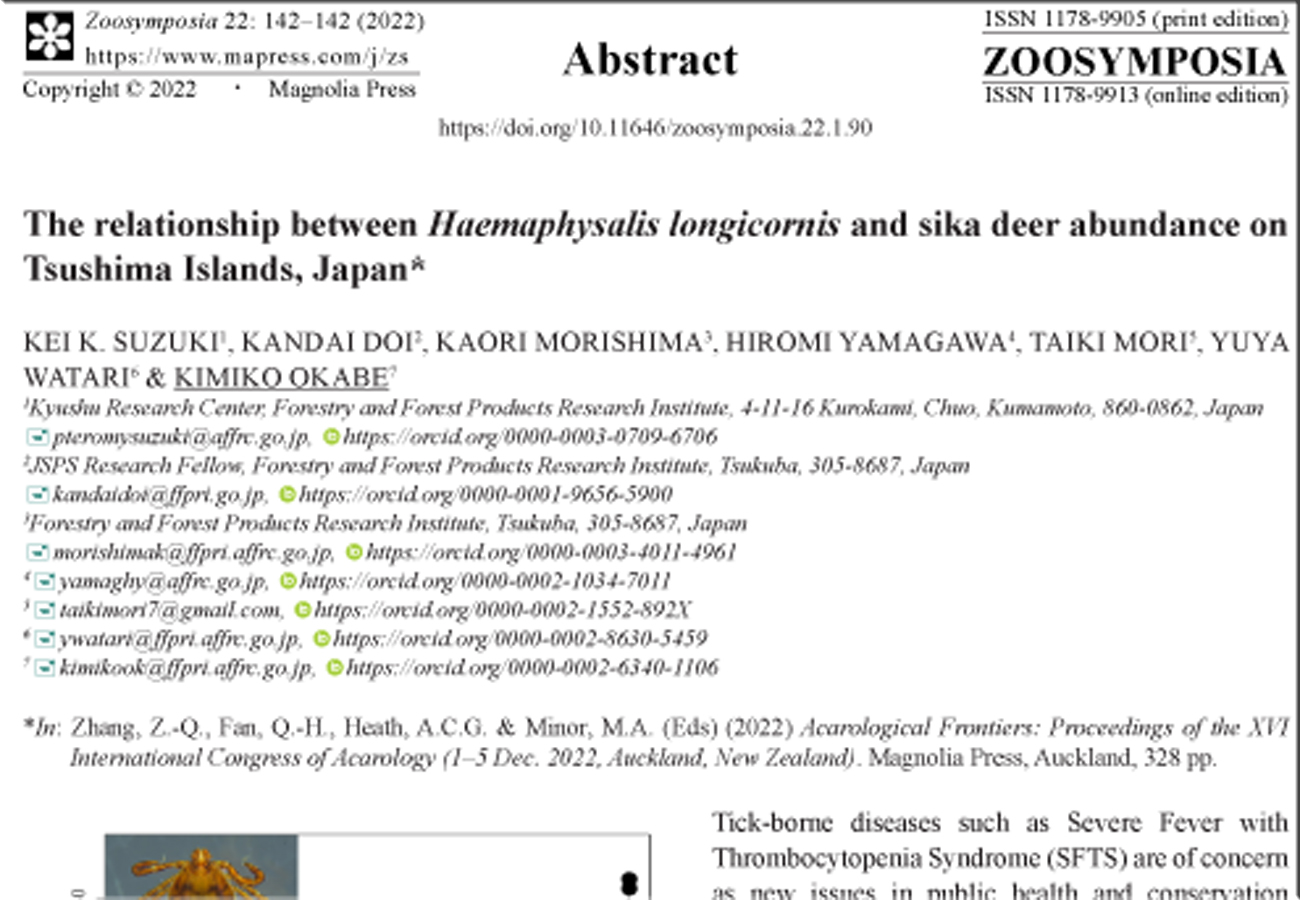Abstract
Tick-borne diseases such as Severe Fever with Thrombocytopenia Syndrome (SFTS) are of concern as new issues in public health and conservation medicine. The SFTS virus especially is a fatal infection for feline animals. The emergence of STFS has been reported in China, Japan, South Korea, and Vietnam. Tsushima Islands, located between Kyushu Island of Japan and South Korea, are known as the habitat of the endangered Tsushima leopard cat (Prionailurus bengalensis euptilurus). The Ministry of the Environment of Japan reported the first case of SFTS infection in the free-ranging Tsushima leopard cat in 2022. Here, we report our investigation of the tick fauna on Tsushima Islands and its comparison with the abundance of Tsushima sika deer (Cervus nippon pulchellus). The flagging method was used at five collection sites on Tsushima islands in May 2022. We collected 131 ticks of three species, Haemaphysalis longicornis (127 individuals), H. formosensis (3) and Amblyomma testudinarium (1), among which H. longicornis was the dominant species. The abundance of H. longicornis increased with increased Deer Impact Score, which represents relative deer density based on five deer signs (bark stripping on Cryptomeria japonica or Chamaecyparis obtusa trees, browsing marks on the understory vegetation, deer fecal pellets, deer tracks, and deer trails). This study indicated that deer abundance may be an important factor in determining H. longicornis abundance. Notably, H. longicornis is known to serve as vector for several tick-borne pathogens, including SFTS virus. The relationships between ticks and wildlife hosts are expected to provide essential information from the perspectives of vector control, disease risk prediction, and conservation of rare species.
References
-


